You Had No Idea These 14 Everyday Sounds Stress Your Cat Out (Here’s How To Help)
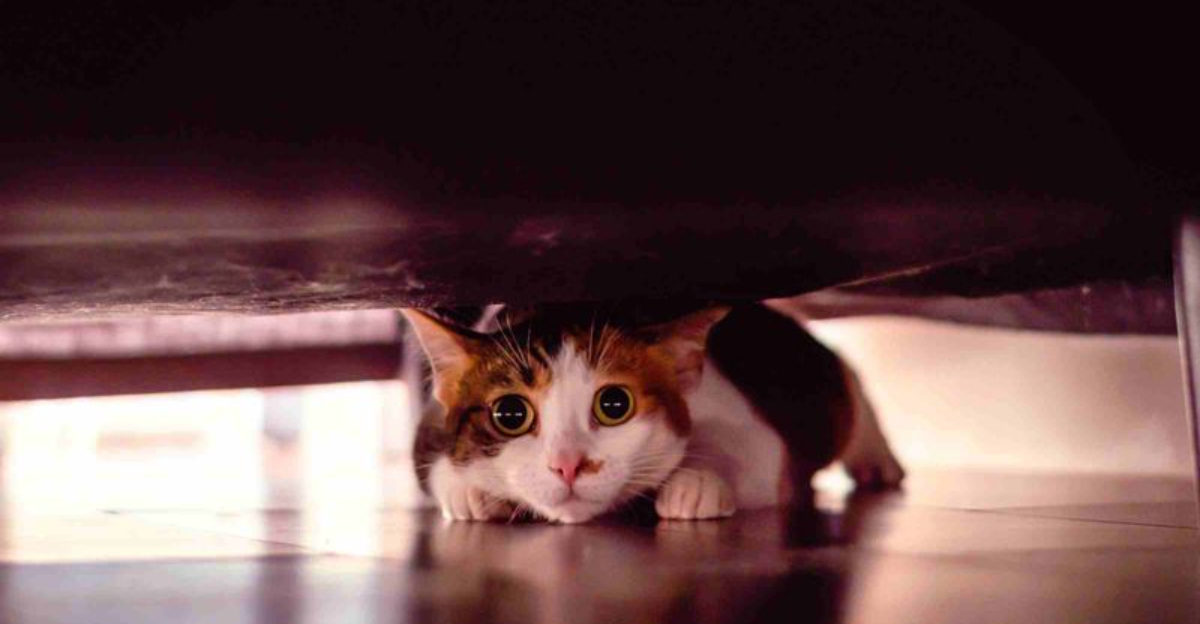
Our feline friends experience the world differently than we do, especially when it comes to sounds. Cats have incredibly sensitive hearing that can pick up frequencies we humans can’t even detect.
What seems like ordinary household noise to us might actually be causing your kitty significant stress or anxiety.
Understanding these sound sensitivities can help you create a more peaceful environment for your furry companion and strengthen your bond.
1. Clinking Silverware
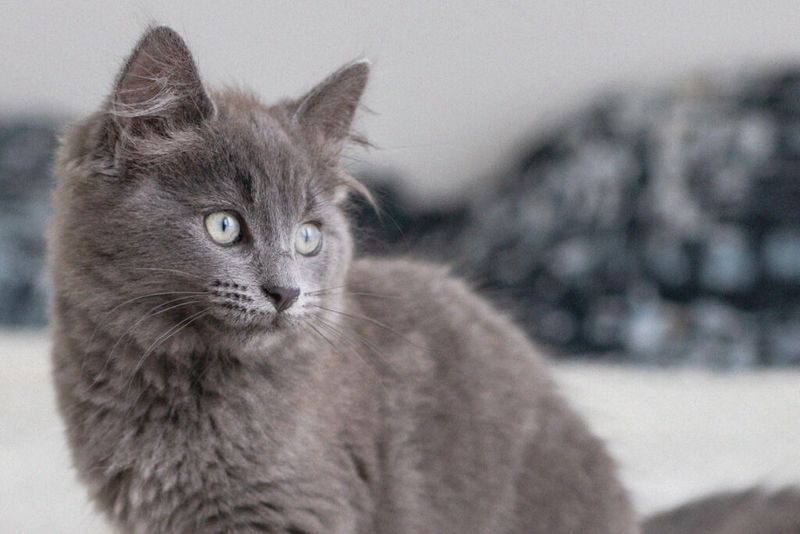
The metallic ping of forks and knives against plates sends shockwaves through your cat’s sensitive ears. This high-pitched sound can trigger your cat’s fight-or-flight response, causing them to bolt from the dining area.
Cats hear frequencies up to 64kHz – compared to our measly 20kHz – making that innocent silverware sound like alarm bells. Your feline friend isn’t being dramatic!
Try using silicone or rubber placemats under dishes to dampen the noise. Alternatively, consider plastic-handled silverware for everyday use, saving the noisy metal sets for special occasions when kitty can retreat to a quiet room.
2. Plastic Bags Rustling
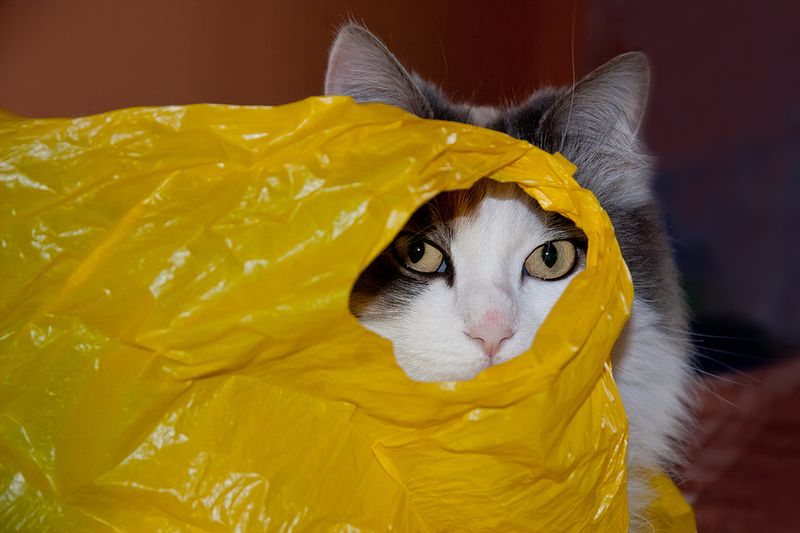
That crinkly grocery bag you’re unpacking might seem harmless, but the sharp, unpredictable sounds of plastic rustling can put your cat on high alert. Many cats associate this sound with danger signals in nature.
Some felines develop phobias around plastic bags, hiding whenever they hear that distinctive crinkle. Others might become oddly fascinated – a stress response disguised as curiosity.
Store reusable shopping bags in closed cabinets and unpack groceries when your cat is in another room. Consider switching to cloth or paper bags when possible, which create gentler sounds that won’t trigger your kitty’s sensitive hearing system.
3. Cell Phone Ringtones
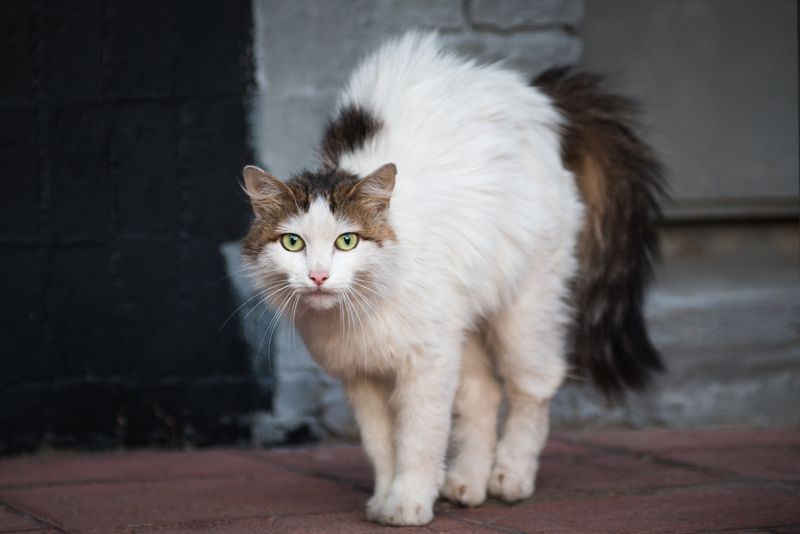
Your favorite upbeat ringtone might be your cat’s worst nightmare. The sudden, unexpected nature of ringtones – especially those with high frequencies or unusual patterns – can startle cats out of peaceful sleep or trigger anxiety.
Modern smartphones produce sounds in ranges perfectly calibrated to grab attention, including your cat’s. Watch your pet’s body language when your phone rings to spot signs of stress like ear flattening or tail twitching.
Switch your phone to vibrate mode when at home or choose a gentler, lower-pitched ringtone. Some cat owners create a “phone station” in one room where calls are taken, allowing their pets to learn which area to avoid when seeking quiet.
4. Running Water From Faucets
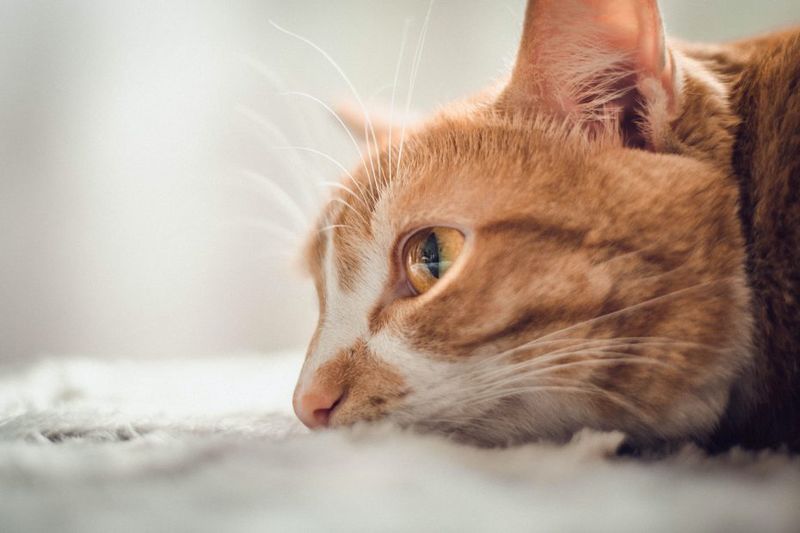
While some cats are fascinated by running water, many find the inconsistent gurgling and splashing sounds deeply unsettling. The unpredictable nature of water noises can trigger anxiety, especially in cats who associate water with negative experiences.
Your cat’s ears can detect the subtle changes in pitch and volume that occur as water hits different surfaces. These sound variations might seem random and threatening to your sensitive feline.
When using sinks, turn the water on gently rather than full blast. Consider installing aerators on faucets to create a more consistent, quieter flow. For cats with severe water sound anxiety, bathroom fans can help mask the noise.
5. Microwave Beeping
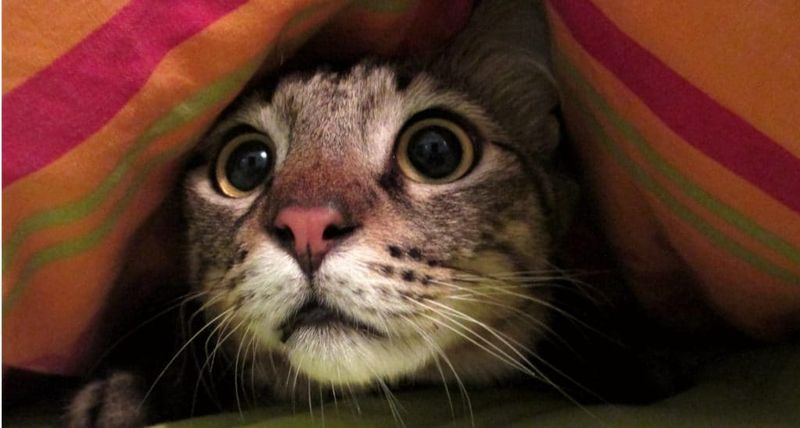
The sharp, high-pitched beep of your microwave finishing might seem helpful to you but can send your cat into panic mode. Microwaves typically emit beeps around 2-3kHz – a frequency range cats are extremely sensitive to.
Many cats learn to associate this sound with vibrations they can feel through floors and countertops, amplifying their stress response. You might notice your cat leaves the kitchen entirely when cooking with the microwave.
Most modern microwaves have sound control settings – try lowering the volume or turning it off completely. If that’s not possible, create a buffer by placing a thick towel on top of the microwave to dampen the sound when the timer goes off.
6. Typing Sounds On A Keyboard

The rapid-fire clicking of keyboard keys creates an unpredictable rhythm that can agitate sensitive cats. Each keystroke produces both audible sound and subtle vibrations that travel through furniture, creating a sensory double-whammy for your feline friend.
Mechanical keyboards with their loud, clicky feedback are particularly problematic for noise-sensitive cats. Your furry companion might pace, meow excessively, or try to interrupt your typing by walking across the keyboard.
Consider switching to a membrane keyboard with quieter key action for home use. Placing your computer on a soft surface like a desk pad can also reduce vibrations. For severe cases, typing gloves with silicone fingertips can dramatically reduce keyboard noise.
7. Metal Pots Clanging
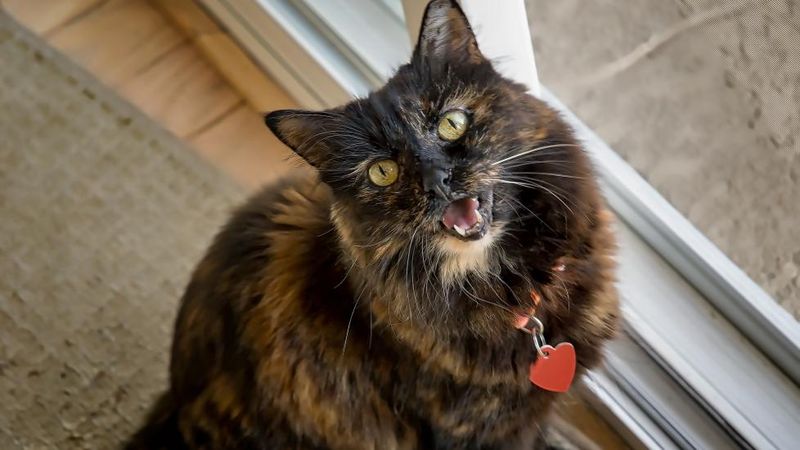
The kitchen symphony of metal pots and pans colliding creates sharp, jarring sounds that can trigger your cat’s stress response. When cookware clangs together, it produces sound waves that reach frequencies well within your cat’s sensitive hearing range.
Many cats develop specific kitchen-related anxieties from these metallic noises. You might notice your otherwise social cat mysteriously disappears whenever you start dinner preparations.
Line your cabinets with soft shelf liners to cushion pots and pans. Handle cookware one piece at a time rather than stacking or nesting multiple items. Consider hanging frequently used pots on hooks to eliminate the need to shuffle through stacked items when cooking.
8. Phone Notifications Or Alerts
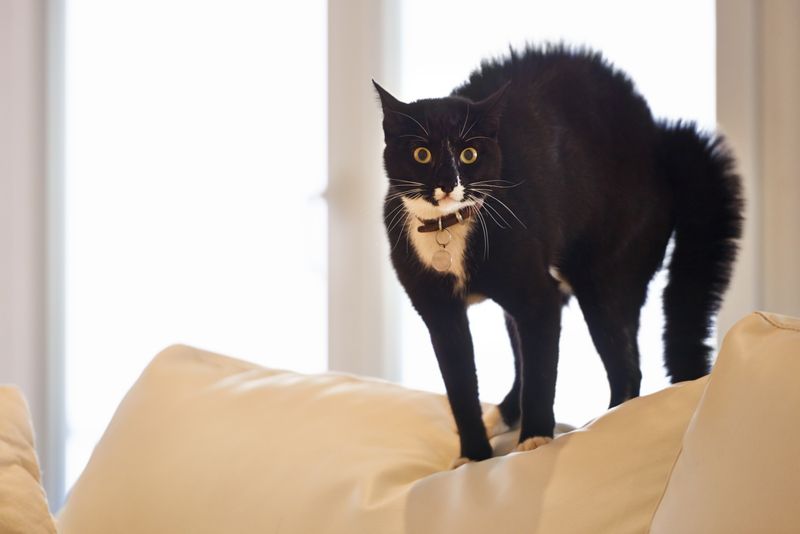
Those harmless notification pings from your smartphone can trigger genuine anxiety in your feline companion. Cats are especially sensitive to the high-pitched, sudden nature of alert sounds, which their brains process as potential danger signals.
Modern notification sounds are specifically engineered to cut through background noise – a feature that makes them particularly jarring to your cat’s delicate auditory system. Many cats develop a startle response that triggers elevated heart rates and stress hormones.
Set your phone to vibrate-only mode when at home, or create custom “quiet hours” in your settings. If you need audible alerts, choose lower-frequency notification sounds that resemble gentle tones rather than sharp pings or beeps.
9. Hissing Sounds (Like Aerosol Cans)
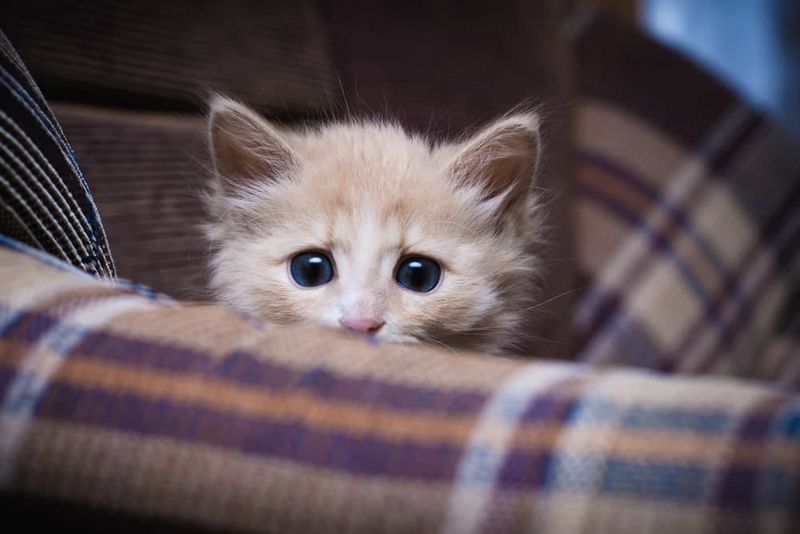
The pressurized hiss of aerosol sprays mimics threatening sounds in nature – specifically, the warning hiss of hostile animals. Your cat’s instinctive reaction to this sound taps into deep evolutionary wiring.
The unpredictable, high-frequency components of hissing noises can trigger immediate fear responses. Many cats will flatten their ears, dilate their pupils, or flee the room entirely when they hear aerosol products being used.
Opt for pump sprays instead of aerosols whenever possible. When using necessary aerosol products like cooking sprays, close the kitchen door or use them when your cat is in another room. Some pet owners keep a special “aerosol schedule” – using these products only during times when their cat typically naps in a distant room.
10. Wind Chimes
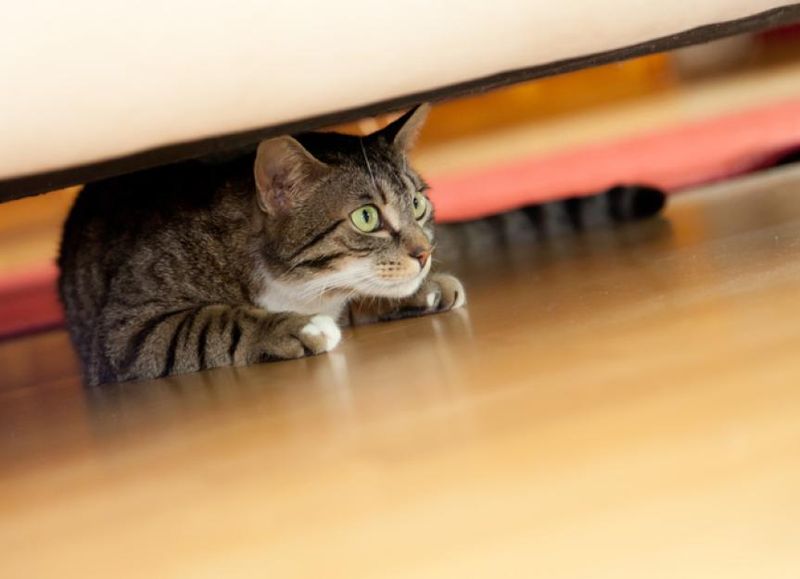
Those melodic wind chimes creating peaceful ambiance for you might be a source of constant stress for your cat. The random, unpredictable pattern of chime sounds can keep cats in a state of alertness, preventing relaxation.
Cats thrive on predictability, and the chaotic nature of wind-activated sounds disrupts their sense of environmental control. Your kitty might show subtle signs of stress like excessive grooming or reduced playfulness if wind chimes are within hearing range.
Consider relocating wind chimes to areas of your yard furthest from where your cat spends time. Choose wooden or bamboo chimes which produce lower, softer tones instead of metal ones. Some pet owners use wind chimes only seasonally, giving their cats regular breaks from these unpredictable sounds.
11. Sneezing

A simple “achoo!” from you can trigger a full-blown panic response in your sensitive feline. Human sneezes produce explosive, unpredictable sounds reaching decibel levels comparable to jackhammers – terrifying from your cat’s perspective.
The sudden nature of sneezing violates cats’ need for predictability and control over their environment. Many cats interpret these abrupt sounds as potential threats, triggering their fight-or-flight response.
Try to muffle sneezes when possible by sneezing into your elbow or a tissue. If you feel a sneeze coming, consider moving to another room away from your cat. For allergy-prone people who sneeze frequently, antihistamines might help reduce sneeze frequency and protect your cat’s delicate nerves.
12. Clothes Dryer Buzzing
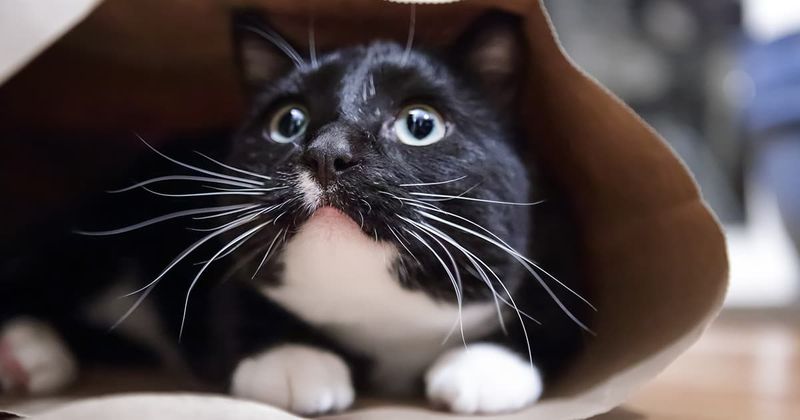
The loud, persistent buzzer announcing your laundry’s completion can trigger anxiety in your cat. Most dryer buzzers emit sounds at frequencies that cats find particularly distressing – between 2-5kHz, right in their sensitive hearing range.
Many cats associate this sound with vibrations they can feel through the floor, creating a multi-sensory stress experience. You might notice your cat avoiding the laundry area entirely or becoming anxious when you fold clothes.
Check your dryer’s manual for instructions on disabling the end-of-cycle signal or reducing its volume. If that’s not possible, a simple timer on your phone can replace the dryer’s alert function. Some pet owners place a folded towel on top of the dryer to help muffle the buzzer sound.
13. Clapping Hands
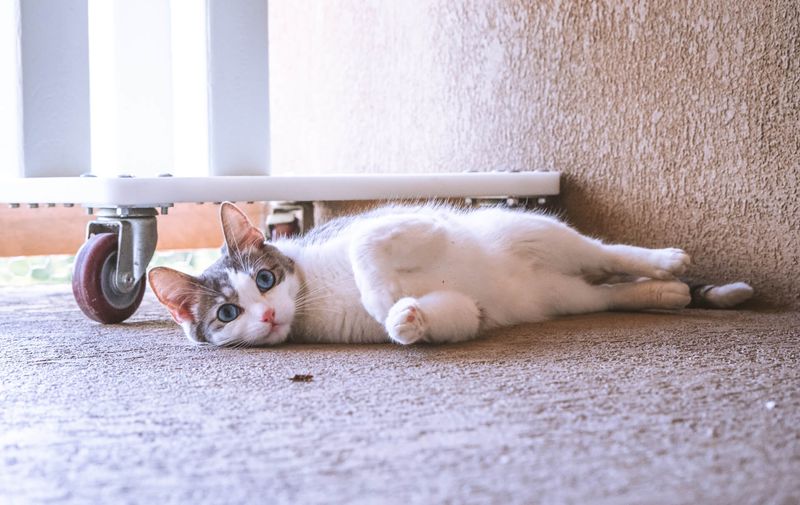
The sharp crack of applause might celebrate human achievements, but it sends your cat’s nervous system into overdrive. Hand clapping creates sudden, loud sounds that can reach 120 decibels – well into the range that causes pain and distress for sensitive feline ears.
Cats interpret these explosive sounds as potential danger signals. Your otherwise confident kitty might dash under furniture or flatten their ears when hands come together in applause.
Warn visitors about your cat’s sensitivity to clapping, suggesting alternative ways to show appreciation like finger snapping or gentle hand rubbing. During TV shows or sports events where clapping might occur, provide your cat with a quiet retreat space. Some cats benefit from sound desensitization training with very gentle, distant clapping that gradually increases over time.
14. Fizzy Drink Sounds
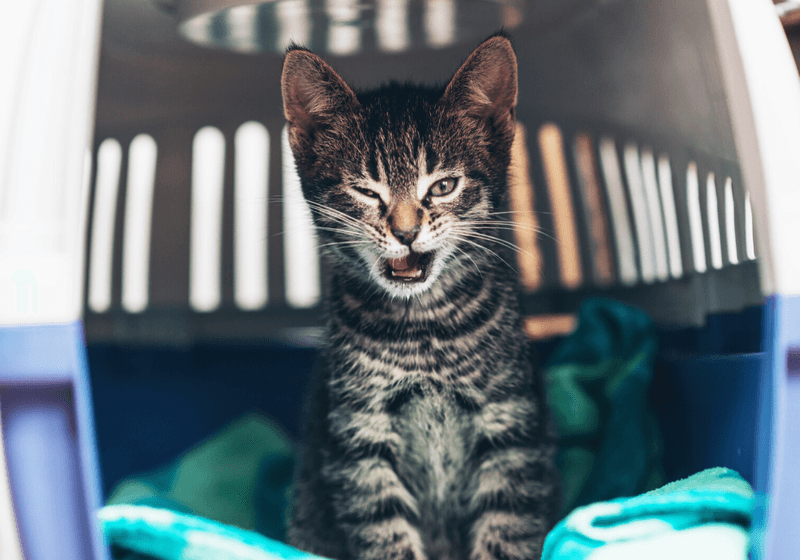
The carbonation crackling in your soda might seem satisfying to you but can trigger alarm for your cat. Those tiny bubbles create unpredictable, high-frequency sounds that cats often interpret as threatening or dangerous.
The hissing and popping noises of carbonation mimic certain warning sounds in nature. Many cats will exhibit stress behaviors like ear-flicking, tail-twitching, or leaving the room entirely when they hear fizzy drinks being opened or poured.
Pour carbonated beverages slowly at an angle to reduce fizzing sounds. Consider transferring soda to a covered cup with a straw to minimize ongoing carbonation noises. For cats with severe sensitivity, drinking carbonated beverages in a different room from your pet can prevent unnecessary stress.
15. Tips And Tricks To Keep Your Cat Calm
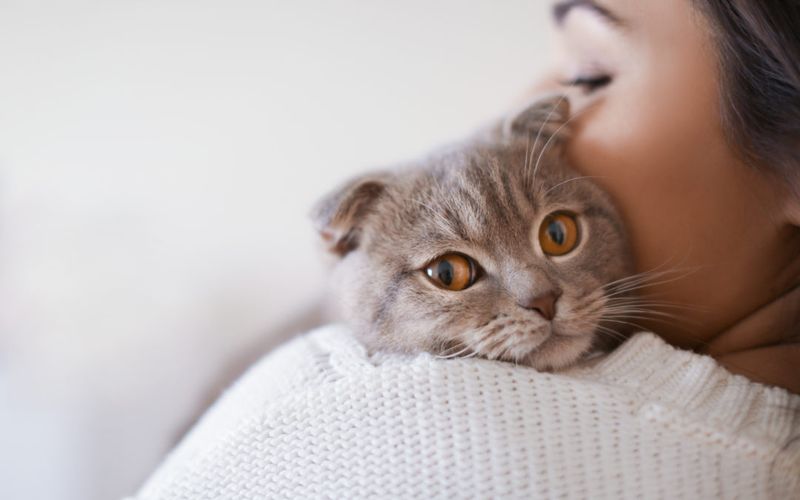
Creating a sound sanctuary for your sensitive feline doesn’t require major lifestyle changes.
Start by establishing a dedicated “quiet zone” in your home – a room or corner with minimal noise exposure where your cat can retreat when stressed.
Sound-masking tools like white noise machines or gentle classical music can help buffer jarring household sounds. Many cats respond positively to specially composed “cat music” featuring feline-friendly frequencies.
Consider pheromone diffusers that mimic natural calming scents cats produce. For severely sound-sensitive cats, consult your veterinarian about anxiety supplements containing ingredients like L-theanine or tryptophan.
Remember that patience is key – reducing your cat’s sound stress strengthens your bond and improves their quality of life.






